BeoMic BM1000
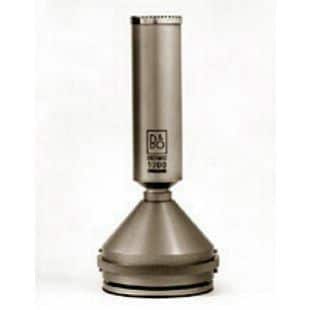
Designed by Jacob Jensen, Beomic 1000 won the iF Award in 1969 for “outstanding industrial design”.

Designed by Jacob Jensen, Beomic 1000 won the iF Award in 1969 for “outstanding industrial design”.

Designed by Jacob Jensen. In 1979 three more of Jacob Jensen’s designs were included in the Design Collection of the Museum of Modern Art in New York including Beomic 2000.
In 1970, three Bang & Olufsen products designed by Jacob Jensen received the IF award, including Beomic 2000. “Congratulations! Well, we have done this before”, said Prince Henrik – The Queen of Denmark’s husband when he presented the Danish ID award of the Society of Industrial Design to Bang & Olufsen, represented by Jacob Jensen, the designer.
The remark made reference to the fact that B&O had also received the award the year before!

This top-operated receiver was not just exciting in appearance, it was also designed to facilitate operational comfort.
Primary controls were easily accessible, while the rarely used secondary regulators were concealed. The large tuning scale had calibrations in MHz and channel numbers. Tuning accurately to a desired station was child’s play because the large transparent slider was also provided with three small thumbwheels which assisted fine tuning.
Your three favourite stations could be pre-set by individual controls which were safely concealed beneath a sliding panel on the upper right hand side of the set. Subsequent programme selection was by easy pushbutton. The use of Field Effect Transistors (FETs) and Automatic Frequency Control (AFC) ensured optimum FM reception and compensated for weak signal conditions during tuning.
The amplifier’s power output was 2×15 watts RMS or 40 watts total music. Ambiophonic reproduction could also be obtained simply by connecting four loudspeakers, 2 in front and 2 to the side. In this way you could obtain an ‘extended’ stereo reproduction, a more realistic recreation of musical experiences recorded, for example, in a concert hall, because ambience or room information were included as well as direct musical information. There was a push button, the ‘ambio filter’, by which you could damp or reduce the highest tones (treble) reproduced in the side speakers. This was sometimes desired since the reflected sound which is reproduced in the side speakers is mostly mid-range tones. By damping high tones in the side speakers you could obtain a more natural sound reproduction.
Balance regulation was solved in a unique way in Beomaster 1001. Volume was controlled by two sliders, one for right and the other for left channel. The two sliders cold be operated together with one grip or separately, so that the balance between the channels could be adjusted as desired. The receiver’s slim, compact cabinet allowed several playing positions. Mounted on a wall (with special mounting bracket), slightly slanted (by special supports fitted to its base), or the traditional horizontal position. There were connections for record-player (switchable between high and low ohms), tape-recorder, headphone and four loudspeakers. A light indicated when the receiver was switched on, when the FM programme source was in use and whether a programme was in mono or stereo.
Receivers and amplifiers with the ambio function were products which, apart from stereo, could also reproduce the ambience or sound information of a room. Ambient information was included on most stereo vinyl recordings but could not be reproduced by a sound system with two loudspeakers or an ordinary stereo amplifier. Bang & Olufsen systems with the ambio function had facilities which electronically subtracted the difference signal (i.e. the difference between left and right channels) which contained ambient information. This information was fed into two extra loudspeakers which were placed as side speakers in a room. Ambiophony was an extension of stereo reproduction and enhanced the sense of realism. It could be used with nearly all stereo programme materials.
FM room aerial
In order to receive FM programmes, an FM aerial must be connected to the Beomaster 1001. Within a certain radius of the transmitter you could use the Bang & Olufsen FM room aerial, type 8902010. This aerial was easily fitted and the telescopic elements could be pulled out and positioned favourably.
Wall mounting
If desired, the Beomaster 1001 could be mounted on a wall by means of a special bracket. type 8920243. The bracket was screwed onto the wall and the receiver easily hung in position.
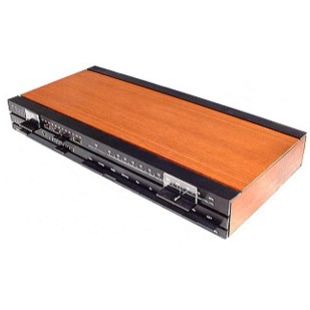
Beomaster 1100 in 1977/78 was a powerful, sensitive and compact unit incorporating an FM tuner and stereo amplifier.
The tuner had facilities for presetting four favourite stations, and once these had been permanently tuned, the programme of your choice could be instantly selected just by pressing a button. There was also a large slider and scale for manual tuning. An AFC (Automatic Frequency Control) switch was provided to help capture weak stations and keep them correctly tuned.
The amplifier section had a power output of 2 x 22 watts RMS with minimal distortion – less than 0,3% at full power. There were connections for two pairs of loudspeakers, a record player, headphones and a tape or cassette recorder (for which A monitoring facilities were also included).
Beomaster 1100 could be made up as part of the Beosystem 1100, together with other compatible Bang & Olufsen products.
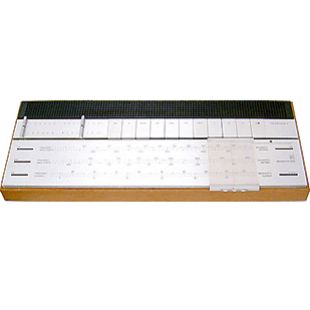
The Tombstone: The simple, modernist graphic is the essential element in Jacob Jensen mechanical designs for Bang & Olufsen. The type-face used on the surface is Helvetica, popular in the post-War era and used by many publications today. The Beomaster was only a plate with an inscription and so it was given the sobriquet of ‘The Tombstone’.
“The Danish Press in 1967 referred to the Beolab and Beomaster 5000 as a “cinema system in two cigar boxes”. With the Beomaster 1200, which was aimed at a broader sector, B&O were ready to go the whole hog and abandon all known notions as to how a radio receiver should look. The reduction was absolute: to a wooden frame around an operating surface. The body of the apparatus disappeared, and only a small cooler grill at the top serves as a reminder of the contents. The totally top-operated equipment can be hung vertically on the wall as a decoration along with the simply framed art products of the time.
This is a slide rule gone mad. The knobs have become part of the polished aluminium surface – flush”! However, not only have the knobs been made flush with the surface, but superfluous functions have also been removed. For Jensen design is a question of considering the consumer’s functional needs. Five permanently set stations are selected below the aluminium sheet in the right-hand corner; user friendliness in everyday life is at the heart. The compact technology has turned the designer into a fashioner of operating aggregates.” — taken from ‘Jacob Jensen’ by Christain Holmsted Olesen.
Beomaster 1200 – type numbers 2501, 2503 – was, at the time of its introduction in 1969, one of the world’s most modern-looking and sophisticated receivers. It incorporated an amplifier around an FM/AM tuner. Radio stations could be tuned in by means of a sliding scale. The format of Beomaster 1200 was to set the trend in Bang & Olufsen design for many years to come.
Beosystem 1200 – made up of Beomaster 1200, Beocord 1200 and Beogram 1200 was the second of Bang & Olufsen’s first ‘designed’ system. The very first was Beosystem 1000 in 1965. The design ‘kinship’, which emphasised the interdependence between B&O’s various products, became a characteristic of B&O for many years. Beosystem 1200 was one of the first products selected by the Museum of Modern Art for the museum’s permanent collection (not exhibition) in 1972.
In 1969 the Danish Society of Industrial Design awarded Bang & Olufsen and Jacob Jensen the ID prize for the Beomaster 1200 radio/amplifier, Beogram 1200 turntable and Beocord 1200 cassette recorder for unusually beautiful and user friendly design. The jury emphasised in particular the Beomaster 1200 receiver which pointed in a new direction for the design of radios.
And the year after, three Bang & Olufsen products designed by Jacob Jensen received the IF award. The winning products were: Beomaster 1200 tuner/amplifier, Beomic 2000 microphone and Beolit 600 transistor radio.
“Congratulations! Well, we have done this before”, said Prince Henrik – The Queen of Denmark’s husband – when he presented the Danish ID award of the Society of Industrial Design to Bang & Olufsen, represented by Jacob Jensen, the designer. The remark made reference to the fact that B&O had also received the award the year before.
In Jacob Jensen the Museum of Modern Art in New York (MoMA) chose seven Bang & Olufsen products designed by Jacob Jensen to be included in their Design Collection as representing excellent examples of the Museum’s criteria for quality and historical importance; design, in fact, which had influenced the twentieth century. Beomaster 1200 was one of those seven products.
The 1200 series represented the logical continuation of the line of development and design which put B&O at the forefront of manufacturers of entertainment electronics. The receiver was superseded by Beomaster 1001 in 1973.
These are superb looking receivers and are especially impressive when wall mounted. However to sound at its best, it really does need to use the recommended loudspeakers. With more modern speakers, the 1200 can sound a little weak and lacking in detail. The provision of Beovox 1200 speakers however reveals very satisfying performance. This is one of many examples where B&O have clearly designed a system.
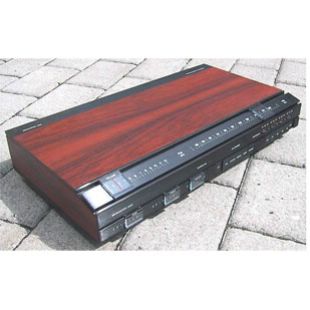
An FM only version of the Beomaster 1500 and available only with a black fascia, the 1400 was not popular in the UK and is now rarely seen. It actually shares many qualities with the more upmarket Beomaster 4400 and is very much under-rated.
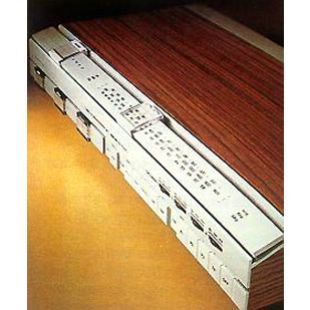
Beomaster 1500 was a compact combination of an AM/FM radio and a 2 x 25 watts RMS hi-fi amplifier. Four FM stations could be pre-set and tuning accuracy for all three wavebands was aided by an illuminated indicator and combined AFC/ST circuit. There were connections for a cassette deck, record player, headphones and two pairs of stereo speakers.
This was Bang & Olufsen’s smallest receiver (1979 – 80) but in terms of quality and performance data it matched their top model, Beomaster 4400 in many respects – thus offering the same high standards of electronic engineering to those who demand excellence but require less power and fewer facilities. Beomaster 1500 therefore represented extremely good value.
Beomaster 1500 could be made up as part of the Beosystem 1500 when linked together with other compatible Bang & Olufsen products.
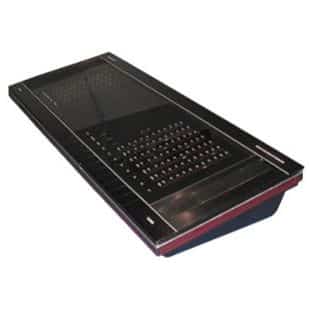
Beomaster 1600 Type 1703 could be made up as part of Beosystem 1600, when linked together with other compatible Bang & Olufsen products such as Beocord 1600 and Beogram 1600. FM only version of the 1700 and not seen in the UK.
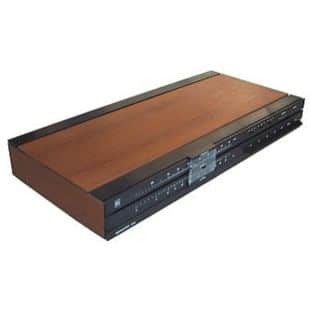
Beomaster 1700 Type 2607 was a tuner designed to complement BeoLab 1700 amplifier.
“This title might suggest a paradox to many readers. And in a way you are right. But there is a reason why Bang & Olufsen has separated this otherwise perfectly integrated high-fidelity system. The combination possibilities in Beosystem 1700 are so numerous that for many people the entire system is unnecessary. The essential part of the system is BeoLab 1700: a 2 x 20 watts RMS amplifier with ambiophonic stereo facilities.
The tuner, Beomaster 1700, the cassette-recorder, Beocord 1700 and the record player, Beogram 2000 cover nearly all existing programme sources for the reproduction of music. Beovox 2702 loudspeakers complete the system. Beovox 1702 are recommended as side speakers for ambiophony, if this extra sound experience is desired. Now it is up to you to put your ideal Beosystem 1700 together. ” – 1974 Catalogue
Beomaster 1700 was a highly sensitive FM tuner with manual tuning on the entire scale, plus 3 pre-set stations. The FM scale covered the 87.5-104 MHz range, channel numbers were clearly written on the scale to aid easy tuning. There were pre-set facilities for P1, P2 and P3 so that subsequent programme selection was by easy push buttons. An illuminated indicator made tuning easy and the AFC (automatic frequency control) facility assisted fine tuning. The tuner was highly sensitive and distortion was less than 0.5 %. Frequency range was 20-15.000 Hz, the same as that transmitted from FM stations. Field effect transistors, integrated circuits and ceramic filters were used in Beomaster 1700.
This tuner offered choice in the range but don’t buy this imagining that you will be getting something akin to a Beomaster 5000. Comparing the two is invidious as the cost was far different and the contents of the Beomaster 1700 case were much simpler. It did allow use with devices like the Beocord 2400 which had a built in amplifier but the tuner would be a very low cost choice.

Beomaster 1700 was an AM/FM receiver in a class of its own. It was defiantly different when most high fidelity components still tended to look alike. Different in its design, its use of technology and the benefits it offered.
The FM section had facilities for presetting 5 favourite stations which could then be tuned instantly by pressing a button. The AM section covered both the Long and Medium wavebands. Hybrid filters were used to achieve high selectivity (the tuner’s ability to discriminate between the desired station and unwanted stations adjacent to it)The stereo amplifier was rated at 2 x 30 watts RMS with high quality sound reproduction up to the last watt. The tone control circuits were designed so that they could not limit or distort the quality of the reproduced sound before the amplifier’s maximum output level was reached.
All in all, the quality and performance levels of Beomaster 1700 were beyond reproach. As they should be, with the best technology. But what was most interesting was the creative use Bang & Olufsen made of technology – a (then) new operation system which afforded sharp, precise settings that were easy to locate on the scale. Two flexible slider controls formed the centre of this operation system. One was used to regulate volume level, bass, treble and speaker balance. The other was for the precise tuning of stations on Long, Medium and FM wavebands. The sliders had a sensitive, ridged surface that prevented the finger from slipping during operation.
The set’s large glass-covered communication surface, with its clear graphic indications aided easy operation. During use, response was light and immediate. Illuminated markers – light emitting diodes – kept you informed of the set’s operational status at all times. The surface was easy to clean with no irritating dust traps.
A Beogram 1700 and two Beovox C40 hi-fi loudspeakers complemented Beomaster 1700 in creating the well-balanced Beosystem 1700.
Well the above is the official line seen in the brochures. What could not be denied was the design of the 1700 which was innovative to say the least. I some ways it resembled the Beomaster 6000 quad except that it had a manual mechanism and clutches instead of the electrical control of the 6000. It gained a decent glass panel instead of the perspex of the 6000 but was let down by very poor quality plastics in the clutches, tractor drives that slipped and broke and an amplifier which was indirectly coupled compared to the direct coupled 1500 which it had replaced. Although it looked better than the 1500, it could not get close to the performance. Perhaps the beginning of a range designed more for looks than performance.